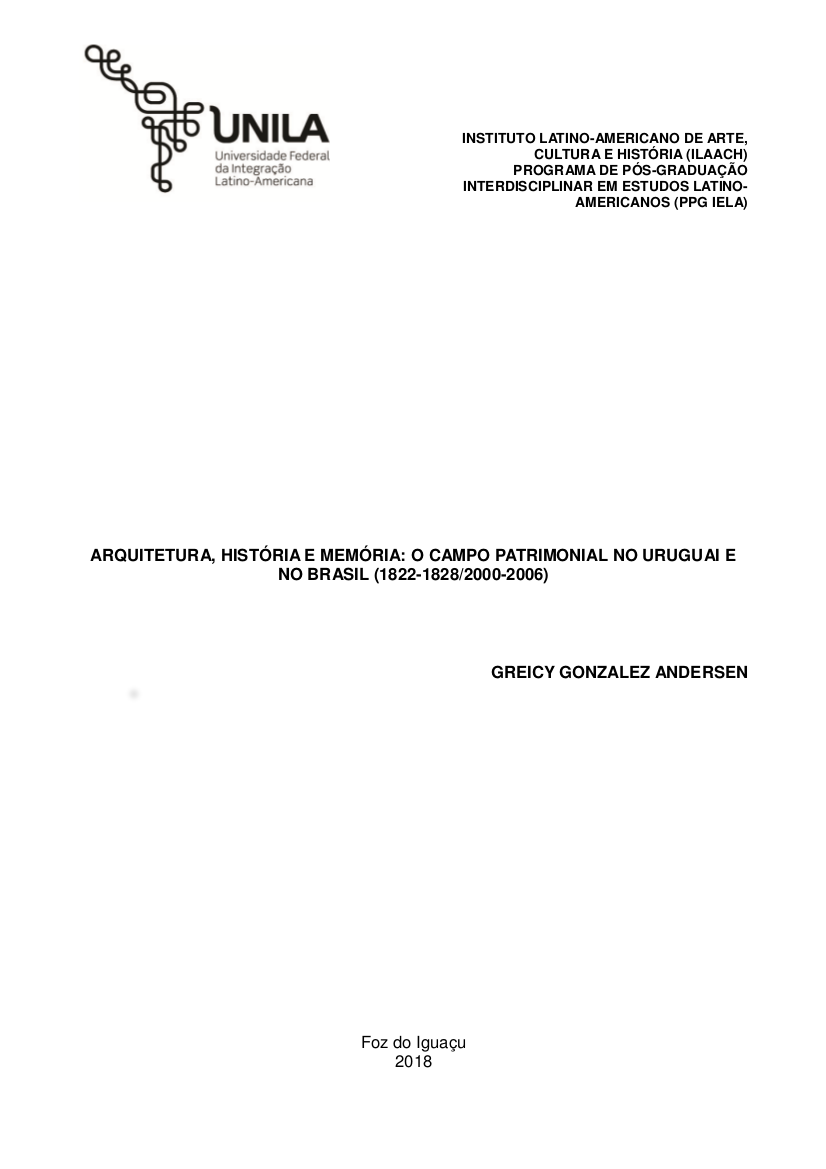Arquitetura, história e memória: o campo patrimonial no Uruguai e no Brasil (1822-1828/2000-2006)
Resumo
A conformação do campo patrimonial no Uruguai e no Brasil se inicia décadas antes que as legislações patrimoniais fossem definidas. Este trabalho estuda a conformação do campo patrimonial no Uruguai e no Brasil fundamentalmente, mediante a dimensão material dos bens culturais uruguaios e brasileiros, problematizando conceitos sobre patrimônio cultural, memória social e identidade. Ao mesmo tempo coloca em evidência a constituição de memórias oficiais e identidades “nacionais”, o que nos remete a outras leituras do passado, questionando assim a unicidade memorial na qual se inspiraram as políticas patrimoniais do Estado-Nação no plano da cultura. Apresento um relato sobre o patrimônio no Uruguai e no Brasil, onde os discursos de formação da nação estão intimamente ligados ao campo patrimonial, através da história e arquitetura, em um momento em que estes países estão tentando se estabelecer e criam para si ícones representativos de um passado heroico. Esse relato também caracteriza a inserção do patrimônio na pauta dos poderes públicos no Uruguai e no Brasil e a ampliação mais do que semântica do apelativo cultural do patrimônio no fim do século XX. Estudos de historiadores, escritores, antropólogos e arquitetos permitem elaborar um relato verossímil sobre a conformação do campo patrimonial nas etapas prévia e posterior à institucionalização no século XX. Eis a principal contribuição teórica, identificar a produção científica sobre o tema do patrimônio no Brasil e no Uruguai. Do ponto de vista prático, espera-se que a leitura desta dissertação reforce os laços identitários de países latino-americanos e que seja útil aos gestores culturais e/ou turísticos no âmbito do MERCOSUL. The conformation of the patrimonial area in Uruguay and Brazil begins decades before the
patrimonial legislations were defined. This work studies the conformation of the patrimonial
area in Uruguay and Brazil fundamentally, through the material dimension of the
Uruguayan and Brazilian cultural heritage, problematizing concepts about cultural
patrimony, social memory and identity. At the same time it highlights the constitution of
official memories and "national" identities, which brings us back to other readings of the
past, thus questioning the uniqueness of the memorial on which the patrimonial politics of
the nation-state were based on culture. I present an account of the heritage in Uruguay
and Brazil, where the formation discourses of the nation are closely linked to the
patrimonial area, through history and architecture, at a time when these countries are
trying to establish themselves and create for themselves icons representative of a heroic
past. This report also characterizes the how was incorporation of cultural heritage into
public policies in Uruguay and in Brazil and the extension more than semantics of the
cultural appellation of the heritage in the end of the 20th century. Studies by historians,
writers, anthropologists and architects allow us to elaborate a plausible account of the
conformation of the patrimonial area in the stages before and after institutionalization in
the 20th century. This is the main theoretical contribution, to identify the scientific
production on the theme of heritage in Brazil and Uruguay. From a practical point of view, it
is expected that the reading of this dissertation reinforces the identity ties of Latin
American countries and that it will be useful to cultural and / or tourist managers within
MERCOSUR

